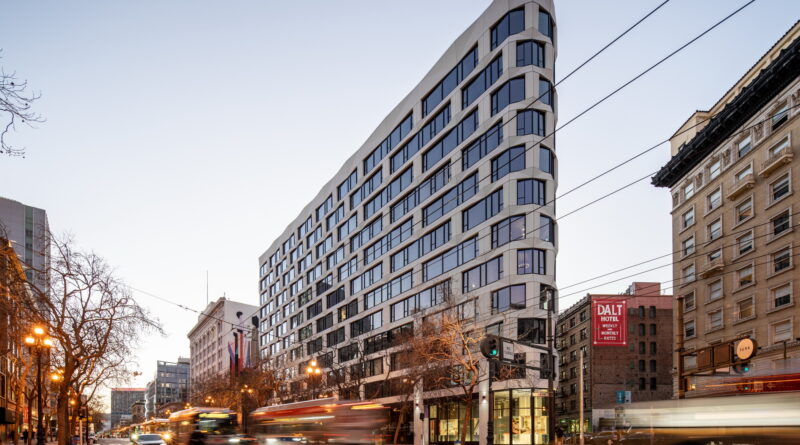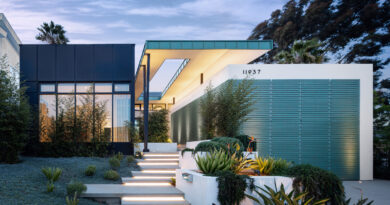Serif & The Line Hotel
Mixed-Use Building in San Francisco, California, Wins Design Award
by Tom Bagsarian, editorial content manager, Precast/Prestressed Concrete Institute
The Serif and the LINE hotel are both located in a 12-story, mixed-use residential building, with 200,000 sq.ft. of residential space for the Serif and 140,000 sq.ft. of space for the LINE hotel, on a triangular block in downtown San Francisco, California. The scale of this project was influenced by adjacent buildings and the challenging proportions of the triangular site.
The Serif has 242 residences, including studios, one-bedroom, and two-bedroom homes. Amenities include a landscaped rooftop solarium equipped with a library and bar, a chef-grade kitchen for private events, a fitness center and yoga room, a pet spa, a dog run, and 24-hour building security. The LINE Hotel has 236 guest rooms, as well as retail and dining, and is home to the Magic Theatre. The structure wraps around the irregular site, culminating in a flatiron corner at Market and Turk Street. It has a distinctive, bright-white façade and floor-to-ceiling windows.
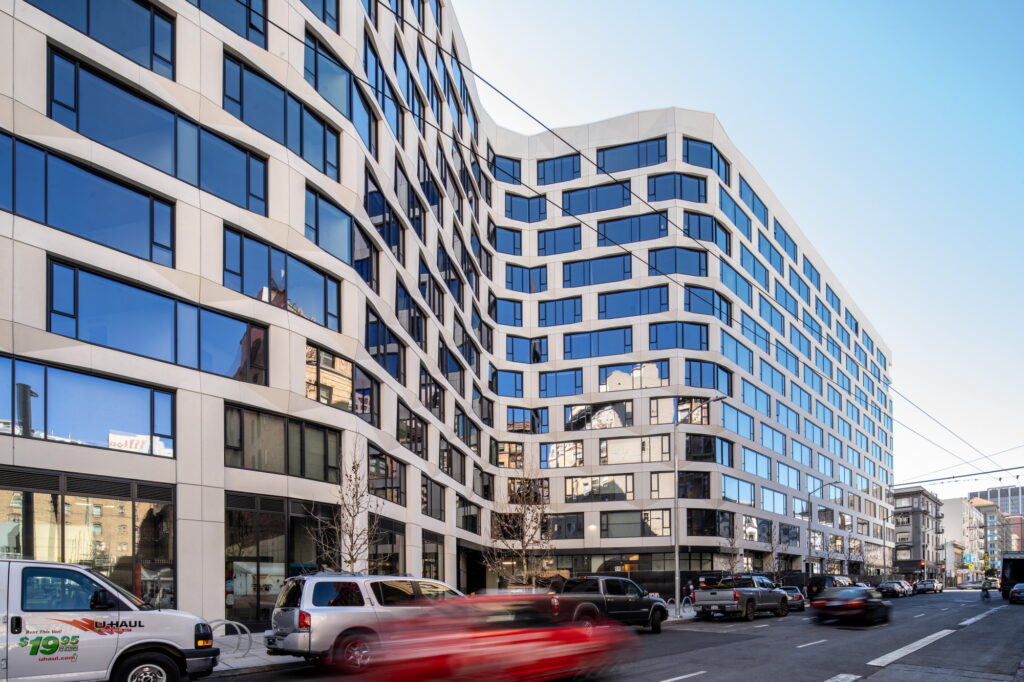
“Early in the design process, we considered a metal panel rainscreen, precast concrete, and glass-fiber-reinforced concrete (GFRC) as potential materials to achieve the three-dimensional, faceted façade,” said George Tolosa, AIA, associate principal, Handel Architects, San Francisco. “Ultimately, GFRC proved the most advantageous due to its light weight as compared with monolithic precast concrete, and its simplicity of detailing and installation when compared with a metal rainscreen panel system.”
The weight of a traditional precast concrete façade would have raised the cost of meeting seismic requirements. “Heavy cladding can substantially impact the cost of the building structure that has to resist the resulting forces when that weight is accelerated by an earthquake,” noted Tolosa.
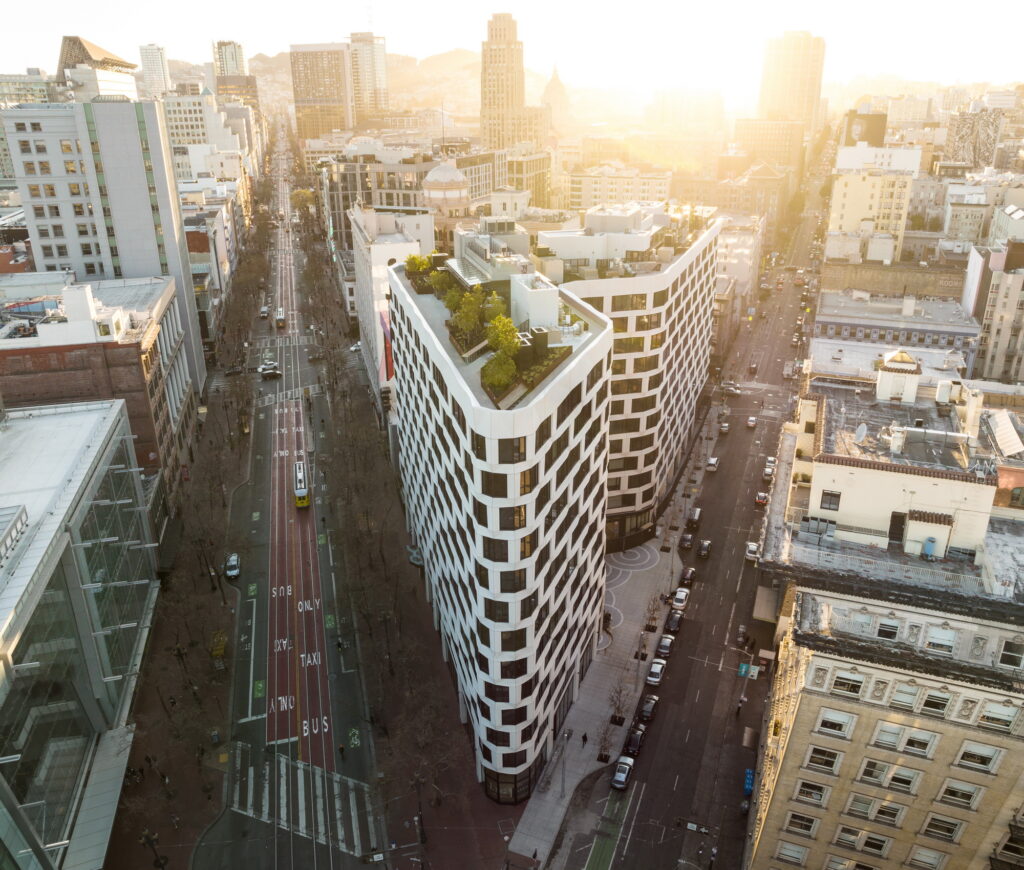
The unusual floor plan configuration features various angles and curving conditions. By creating a series of repeating panels at different lengths and applying them in a staggered formation, the modular system was able to incorporate the various conditions seamlessly. To limit the number of individual forms needed to create unique panels, the precast concrete producer designed an adjustable form where the complex geometry could still be achieved, but the different lengths required only a simple adjustment.
The 28’-long windows were shipped to the GFRC production facility and installed directly into the panels to allow for more efficient enclosure of the structure. Traditionally, preinstallation of windows would require a horizontal joint between floors where two panels are stacked. When viewed in the building information modeling model, this joint detracted from the desired smooth and chiseled appearance. Therefore, the design team chose to install a steel tube framing component across the top of the panel. The skin of the upper panel hides the header tube of the panel below.
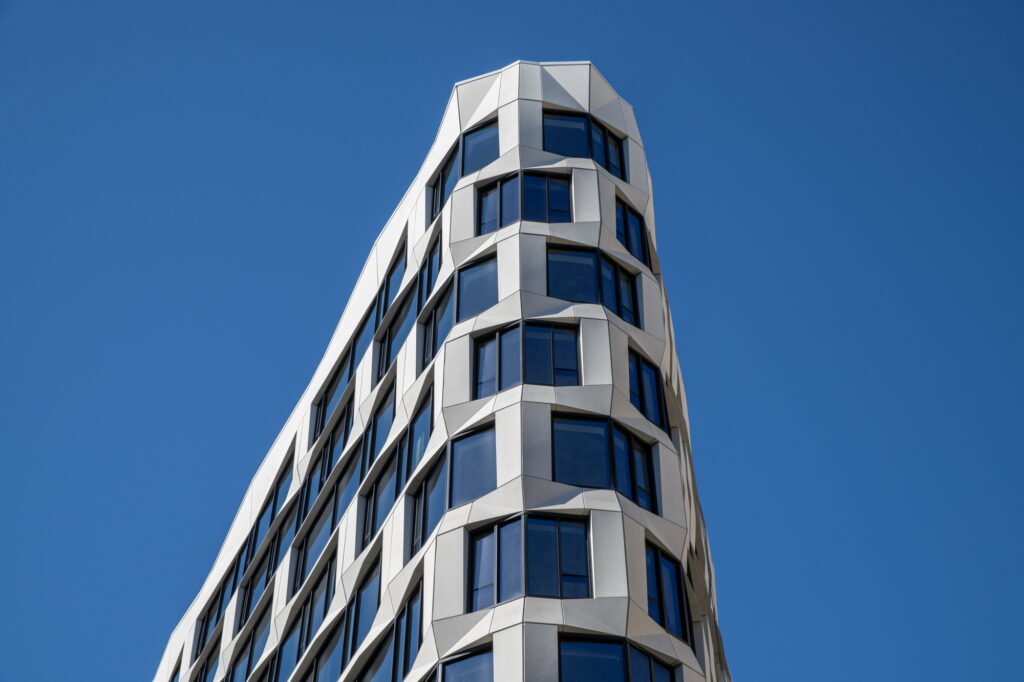
“This larger span needed additional support during storage, trucking, and installation,” noted Sean Fitinghoff, senior project manager, Willis Construction Co., San Juan Bautista, California. “Once on the building and attached to the structure, the additional bracing could be removed. GFRC proved to be the best solution for the design shapes and providing the preglazing option.”
The GFRC façade complements the architectural character of neighboring historical structures along Market Street. The combination of the light color of the GFRC and the solidity of the panels creates a contemporary rhythm within the urban context.
